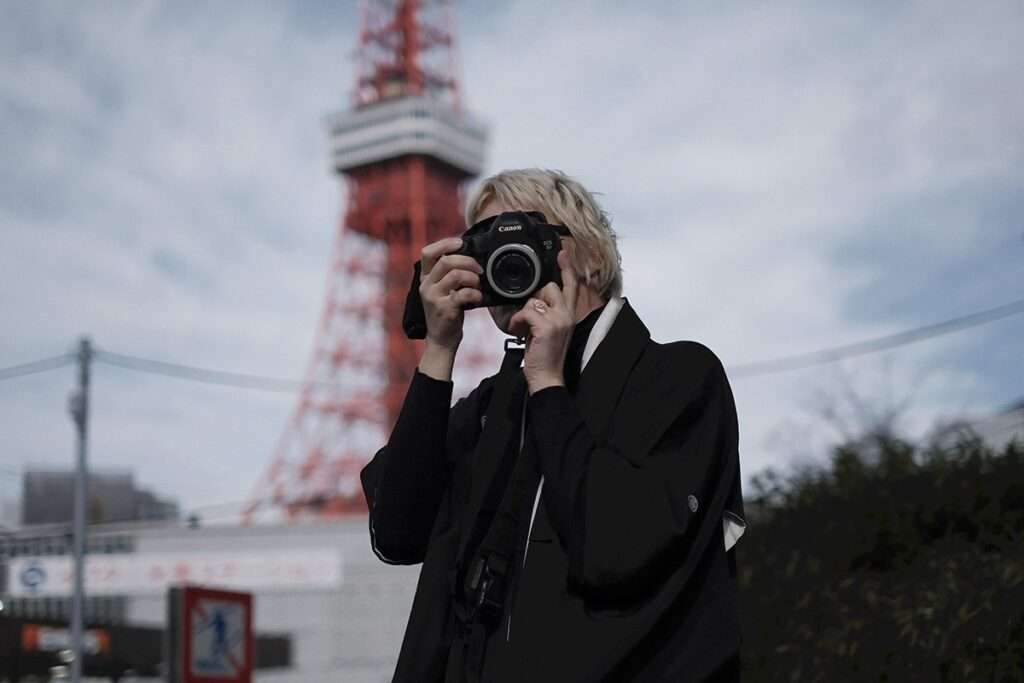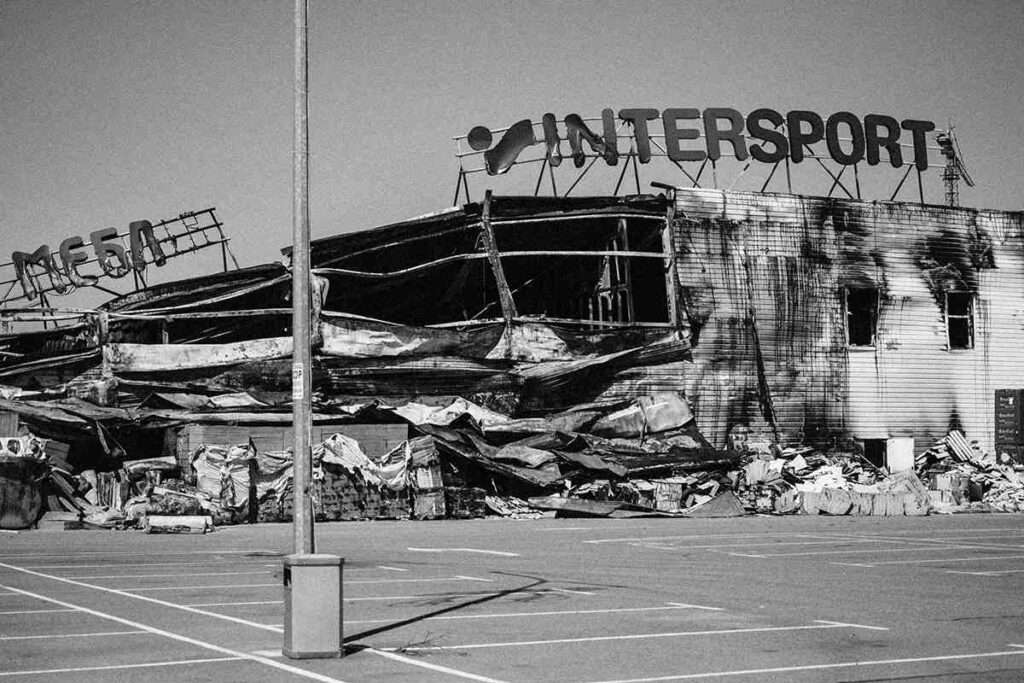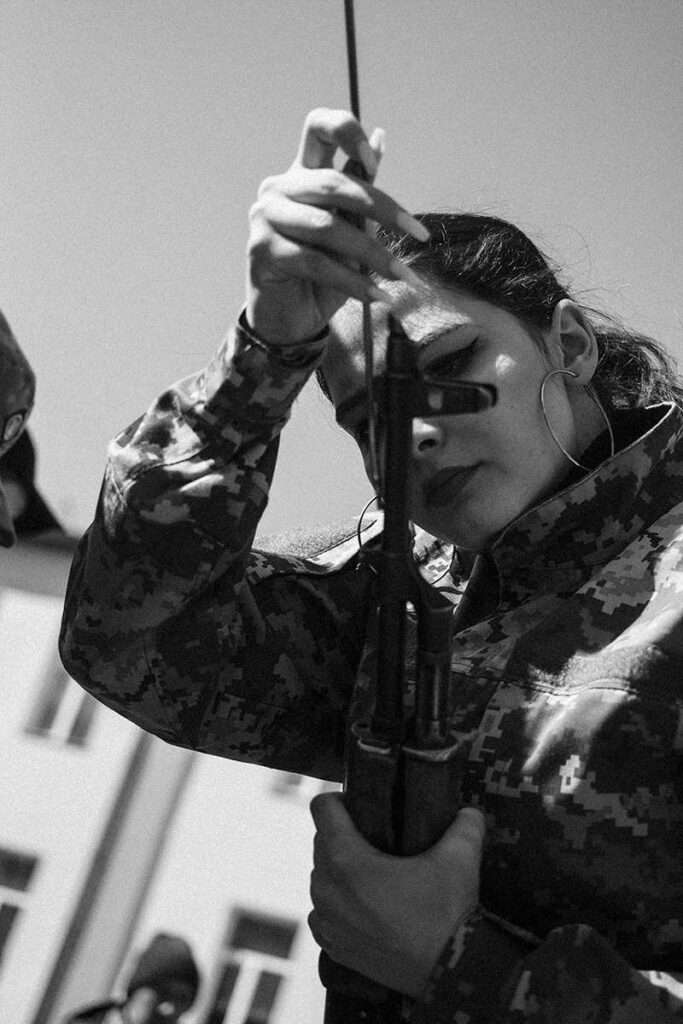
Ukrainian Photographer Turns Lens from Models to Soldiers
Vera Blansh, an artist and photographer from Kyiv who used to shoot portraits for fashion magazines, has turned to capturing soldiers at war.
Since Russia’s invasion of Ukraine began, she has taken more than 10,000 photographs on the front lines.
Blansh, who has been in Japan since December, was determined to convey the reality she saw reflected in her viewfinder.
She has worked as a photographer for more than 15 years, not only taking portrait shots for fashion magazines, but also trying her hand at art projects and other works.
On the night of Feb. 24 last year, she awoke to the sound of missiles raining down on Kyiv and immediately fled to an underground shelter, cradling her cat in her arms.
The invasion struck fear into the hearts of many Ukrainians, but they lost little time in joining the front lines with weapons in hand.
Blansh asked herself what she could do. Her answer: “I’m a photographer. I can tell the world about the war with my photos.”
After obtaining permission from the Ukrainian military to take photographs, she set out with her camera for the war’s stark battlefields.

Her first stop was the suburbs of Kyiv. In Bucha, which was liberated from Russian occupation shortly after the invasion’s start, she saw hundreds of bodies, including those of women and children, buried in a mass grave.
Beside a destroyed highway, there were bodies that had been tortured and often lacked limbs or eyes. At a gas station, a car stood abandoned, with the driver seat stained red with the blood of a driver who had been shot in the head, she recalled. A Russian soldier used the blood of the slain driver to write the letter “V,” a symbol of the Russian military.
When she returned home after a day of filming, she found her clothes smelled of corpses and burnt rubble.
In May, she went to the Donbas region, a hard-hit area that comprises the Luhansk and Donetsk regions.
Ukrainian soldiers call the area closest to enemy-held territory the “zero line,” and it was here she heard the dry rattle of gunfire and, frequently the sound of grenades exploding in trenches.
The soldiers in the unit she moved with ranged in age from youths to those in their 60s. One 18-year-old boy was fighting alongside his father.
Blansh thought every day might be her last, but also felt that with these countrymen by her side, no bullet would hit her.
The soldiers’ morale was high, and she never once heard them complain.
“As for the front lines, there is a completely different air there, there is no more pity … the victory of the Ukrainian army is in the air,” she said.
She also accompanied a medical team in the Donbas region.
One day, on her way to the zero line, she passed a car that displayed the number 200, saw that it was full of sacks of dead civilians and felt her breathing grow strained. “200” is military code for transporting corpses from the battlefield, and “300” means the vehicle is transporting wounded soldiers.
Each time she saw a car, she prayed that it would not bear the “200” tag.

At a base she visited, there was medical personnel from the United States, Italy, and other countries, and also one Asian man.
He rescued an elderly woman who was buried under rubble, and carried her to the base. The man refused to be photographed or to give his name, telling Blansh only that he was Japanese.
So instead of taking his picture, she engraved his image in her memory. “I was very impressed by this meeting. How a man from the Far East saved the lives of Ukrainians, risking his own, while being very reserved and quiet, with no desire for glory for his truly heroic act,” she said.
While she has continued to take photographs on the front lines, she has also been speaking out against Russia’s barbarism and the tragedy of the war by holding photo exhibitions in various European countries and the United States.
When she woke up in a hotel room during after arriving in Japan, she thought of what she should do for Ukraine that day. Then she went outside and took photos.
The sight of young people enjoying themselves on the beaches and parents and children walking hand in hand reminded her of the peaceful Ukraine of the past.
Blansh said she is grateful for the support given by the government and people of Japan.
The war is not some distant act of aggression involving two far off countries, she said. After all, Japan has its own conflict with Russia over the northern territories.
“I want to show the Japanese the truth and shed even more light on history as a living witness to what I have seen and heard,” she added. She is now planning photo exhibitions throughout Japan and preparing to publish a book of her photographs.

Magazine launched for helping women for success. Lakkars has always served and worked efficiently towards women empowerment, we have blossomed into America’s most-read fashion magazine.


